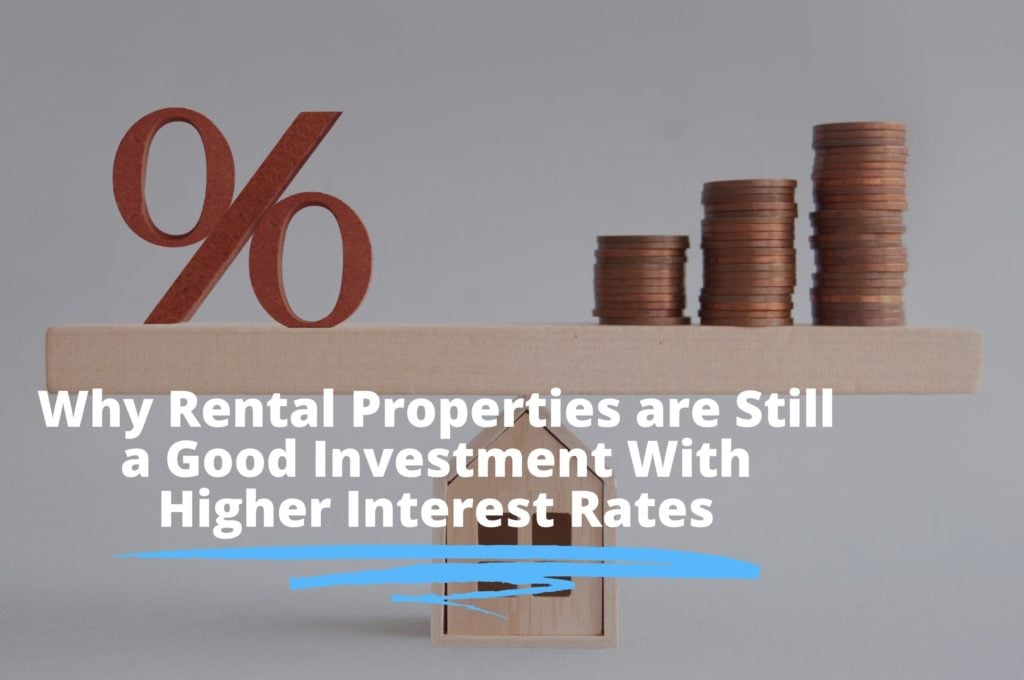One of the most valuable tools rental property investors have in the U.S. is the 30-year fixed-rate mortgage. Surprisingly, this style of mortgage is very much an outlier compared to what’s typically offered in other countries. Most countries tend to offer adjustable, variable, flexible, or renegotiable rate mortgages, all of which pose an inherent risk with the potential of an unexpected interest rate hike during ownership of the property.
Not only are fixed-rate mortgages excellent for letting investors skip those unexpected rate hikes down the road, but there have been notable periods where the interest rates on these mortgages have been remarkably low, making the cost of borrowing money almost trivial.
But what happens when those interest rates increase, potentially to levels we aren’t used to seeing? Suddenly monthly mortgage payments are noticeably higher, which hits our cash flow returns. Does it mean it’s time to slow down or stop investing in rental properties? How do you counter higher interest rates on your mortgage to stay profitable with your rental property?
The best way to decide this is by understanding how rental properties make money, the factors you can control in a rental property and its profits, and knowing what to look for in a prospective rental property to help set you up for the greatest chance of successful returns, despite a higher mortgage payment.
Rental Properties are Long-Term Investments
One of the biggest things you should remember with rental properties is that they are, in fact, long-term investments. Sure, some people may see a quick equity profit through improvements or value-adds, and some may land deals with significant cash flow from the start. Still, as a general rule, you must remember that rental properties see the most profit over the long haul.
Often when we analyze a rental property’s finances, we only see the cash flow number that’s right in front of us. It’s easy to forget that the projected cash flow is simply what’s projected today. That number doesn’t account for rent increases over time (while keeping a fixed mortgage payment), appreciation, demand, and inflation. All of those factors will continuously change, hopefully for the better.
How a Rental Property Makes Money
Before learning about real estate investing, you may have known that rental properties can be very profitable but not necessarily understand exactly how they can be so profitable.
The five ways that rental properties can make money are:
- Cash flow
- Appreciation
- Tax benefits
- Equity built via mortgage paydown
- Hedging against inflation
When you understand the details of each of these profit centers, you will not only become savvier about the power of holding a rental property for the long-term instead of the short-term, but you’ll also begin to realize that the expense of an interest rate that’s a couple of points higher than what you’re used to likely doesn’t hold a candle to the profit potential over the lifetime of the rental property.
You may already be saying, “But those other profit centers are speculative, and cash flow is still important, and the higher mortgage expense increases my risk by lowering my cash flow.” Yes, and that can very well be true. But what you want to do in this situation is two things:
- Learn to balance the profit centers. If cash flow is down, which happens with a higher interest rate, look for other profit centers with potential. Maybe you’re buying in a gentrifying high-demand area, so you could speculate that appreciation potential is very high. Or perhaps you’re investing during a time of extremely high inflation. What could you do in that situation? Think of it like a bar graph with a bar for each profit center. If one is down, are any of the others up? If they’re all down, that’s a problem. If some are higher than usual, do those balance them? All of it depends on your unique situation.
- Put a big focus on location and demand. Just as with that example, one of the keys is investing in properties that will lend their hand to the appreciation bar especially, as well as inflation and rent demand. As long as people desire the property they own, the greater the profit potential from the profit centers will be, and the more they will continue to increase over time.
When you understand how rental properties make money, you can begin to wear the investor hat rather than the consumer hat. It’s the consumer hat that causes people to think that increased interest rates are deal-breakers, whereas people who truly understand how rental properties profit will not only learn to see how to look past the interest rates but also give them perspectives on how to compensate for it.
Rent Increases
As already pointed out, a rental property’s projected cash flow is based on today’s rents, not tomorrow’s. Rents increase for two reasons: appreciation and inflation.
Guess what doesn’t increase over time and is not affected by appreciation or inflation? Your mortgage payment when you have a fixed-rate mortgage.
This means your cash flow spread will continue to grow over the life of your rental property as you continue to increase rents.
Your expenses, such as property tax and insurance, may increase over time, but they’re unlikely to increase at a rate anywhere near what rents will increase. Overall, you’ll see that rents will continue to pull farther and farther away from your fixed-rate mortgage expense, and your profits should continue to grow exponentially.
Forcing Profit Increases and Lowering Expenses
While I’ve been emphasizing the long-term, there are proactive things you can do to create more equity faster. Let’s go over them.
Improving the property
The more desirable your property, the more value it will generate and the more demand it will drive. While many profit centers will kick in on their own over time and increase the property’s value and rents, you can also do things to your property to increase desirability and force those profit increases more quickly.
The most basic way of improving a property is by rehabbing it. When you upgrade a property, making it nicer and more attractive, you not only increase the overall value of that property, but you can also ask for higher rents. You’re merely speeding along those profits past what the higher interest rate is costing you.
Refinancing your mortgage
Don’t forget that you may not be tied to that higher interest rate forever. Mortgage interest rates fluctuate, just as property and rents do. If the interest rate drops lower than what you originally signed up for, you can refinance the property at that lower interest rate. Of course, it’s not a guarantee the rates will drop, but if they ever do, you can make that move and increase your cash flow.
Picking the right location
If you’ll notice, this isn’t the first time the location of a rental property has been brought up. As mentioned before about buying in a path of demand to ensure appreciation potential, you can also make even more strategic moves when you learn how to analyze neighborhoods and identify areas with an extremely high chance of appreciation. Forces like gentrification, population growth, and job growth can increase values.
Of course, banking specifically on gentrification, as with any appreciation, is speculation. You not only want to learn how to identify areas that may experience gentrification, but you also should have a contingency plan in case gentrification doesn’t occur. You wouldn’t want all your eggs in one profit center basket if that basket were to tip over. But if you buy at the right time (which often means you have to move quickly and not spend forever hesitating, or you may lose the deal), gentrification can certainly force more profits.
Going Up Against Inflation
While inflation impacts most areas of our lives negatively, the one place it can help is with rental properties. Your fixed-rate mortgage expense stays the same for the loan term, despite what happens to the dollar’s value. You pay back the loan in yesterday’s dollars, not tomorrow’s.
Look at inflation as compared to the interest rate of the mortgage. Many experts argue that the mortgage interest you pay over the term of a 30-year fixed mortgage is less than the expense of paying for the same property in cash with today’s dollars because of inflation.
When the inflation rate is higher than the interest rate on your mortgage, your profits will continue to outrun the expense of that mortgage.
Keys to Remember
It would be easy to read this article and believe that if you hang onto a rental property for a long time, it will be very profitable because no matter what your expenses are today, everything will catch up and shift into a profit.
That isn’t going to be true for all properties. Not all rental properties will be profitable, and many factors can challenge the various profit centers. It’s especially important to remember that speculation doesn’t always pan out, and you should avoid speculation more often than not.
The intention of this article isn’t to mislead you into thinking that any property will make for a profitable property, but it’s instead to show you how to look at and analyze potential rental properties with the understanding that a higher interest rate won’t eat as much of your income up as you think.
It’s also important to be educated. For instance, what you believe is a high-interest rate may be “normal.” We’ve gotten used to seeing historically low-interest rates. We’ve been spoiled, and it misleads us into thinking that we can only be profitable if we have stupidly low-interest rates on our mortgages.
Lastly, if the interest rate continues to stress you, consider putting more money down on the loan so your payment will be decreased. Plus, you may even land a slightly lower interest rate as you increase your down payment.
If you’ve invested during periods of higher interest rates, what’s the most creative financing structure you’ve used on your rental properties with those rates, and how did it turn out 10 or 20 years down the road of owning your property? Let us know in the comments!

Build a stable financial foundation
Are you tied to a nine-to-five workweek? Would you like to “retire” from wage-paying work within ten years? Are you in your 20s or 30s and would like to be financially free?The sort of free that ensures you spend the best part of your day and week, and the best years of your life, doing what you want?

